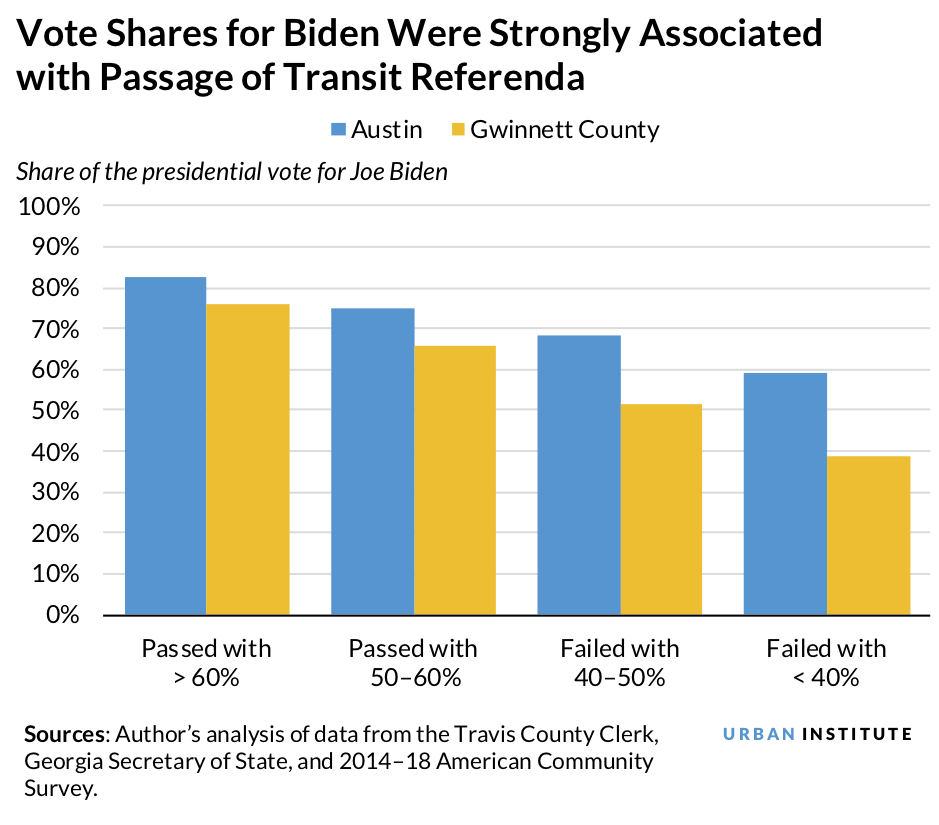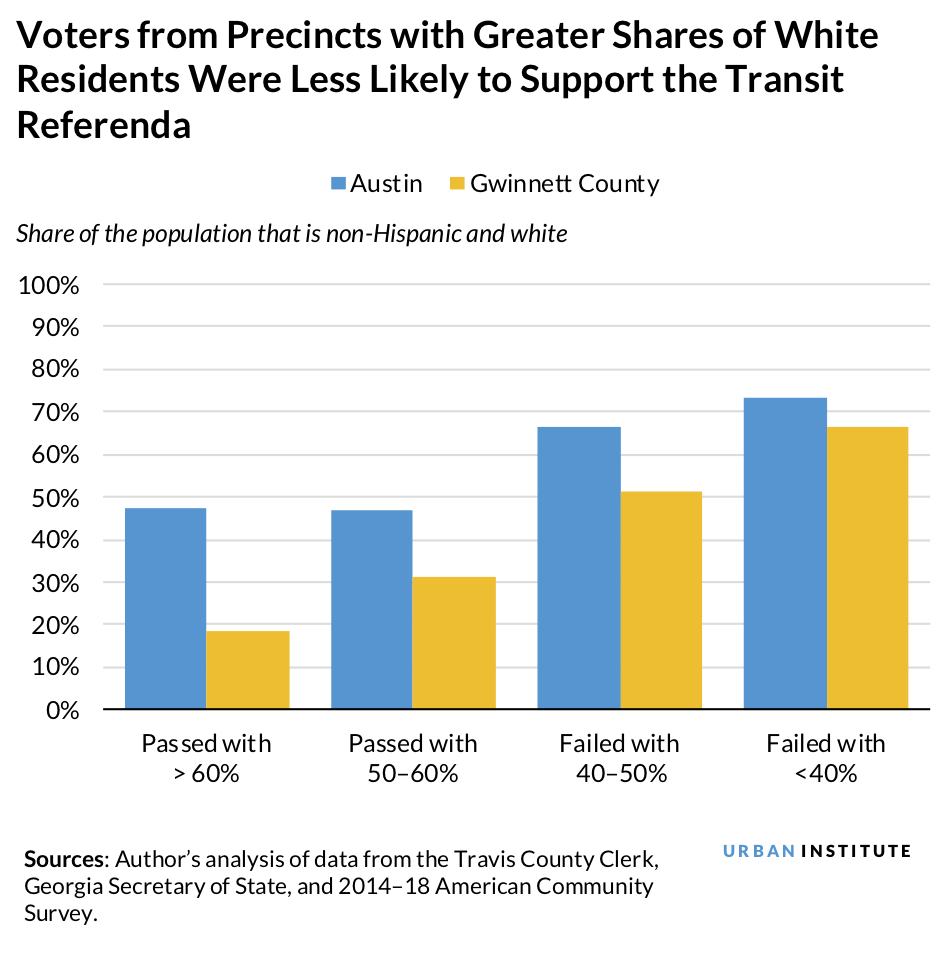
<p>Ungureanu Vadim / EyeEm / Getty Images</p>
In early November, the nation’s attention was largely focused on the presidential race. But down the ballot, voters across the US were making important choices about transportation in their cities.
From Denver, Colorado, to Fairfax County, Virginia, to Seattle, Washington, voters largely supported increasing their taxes to pay for improved public transportation. These results will help ensure access to mobility for people of all backgrounds—especially people of color and low-income families, who face inequities in access to jobs, resources, and other opportunities.
How did patterns of support for transportation referenda vary based on the characteristics of voters’ communities? Two transportation referenda considered by voters this November are especially revealing: a successful one in Austin, Texas, and another that failed in Gwinnett County, Georgia. Each place is a rapidly growing, diverse jurisdiction where better public transit could offer all residents new opportunities.
By analyzing these referenda results, I find support is likely to come from more racially diverse communities—particularly those with relatively low incomes who are more likely to vote for Democrats—as well as from denser communities located near the proposed transit investment. Understanding support patterns is critical for local governments considering whether to ask voters to support tax increases to pay for transportation improvements.
Austin and Gwinnett County asked voters to fund large transit programs
The two proposals were designed to expand access to transportation options—especially for people with low incomes, who are younger and without drivers’ licenses, who are older and lacking fine motor skills, and who are disabled—and reduce the overwhelming dominance of automobiles in metropolitan areas.
The 980,000 residents of Austin, the nation’s 11th-largest city, are demographically diverse—about half are white, a third are Hispanic or Latino, and 7 percent are Black or Asian (white, Black, and Asian groups are not Hispanic or Latino). They live in neighborhoods with an average density of about 3,100 people per square mile.
Gwinnett County’s 940,000 residents are even more diverse: about a third of the members of the population are white, 22 percent are Hispanic or Latino, 28 percent are Black, and 12 percent are Asian. They live at 2,200 people per square mile in their suburban Atlanta jurisdiction.
Austin’s transit proposal, Proposition A, called Project Connect, included 27 proposed light-rail miles (including a downtown subway), improved bus service, and set-asides for affordable housing. The full investment would cost $7.1 billion to complete, funded by a roughly 4 percent increase in the local property tax. In Gwinnett County, officials put an even larger proposal on the ballot: a 30-year, 1 percent increase in the sales tax to raise $12 billion to fund a short extension of Atlanta’s MARTA rail system and ramp up bus service.
In Austin, similar transit referenda failed in 2000 and 2014. In Gwinnett County, proposals to join the MARTA system failed in 1971, 1990, and 2019. But this year, Austin’s proposition passed with 58 percent of the vote. Gwinnett’s measure failed with extremely tight margins; 49.86 percent of voters supported it.


Transit referenda supporters live in denser, more diverse, and less wealthy communities with higher vote shares for Democrats
I compared precinct-level provisional voting results with data about neighborhoods throughout each of the communities to estimate what neighborhood characteristics were most associated with voting in favor of the referenda.
In both jurisdictions, the transit referenda passed in denser precincts, precincts with more renters, precincts with more support for Joe Biden, and precincts with higher shares of Black and Hispanic or Latino people. In contrast, precincts with higher shares of white households, higher educational attainment, higher median incomes, and higher housing values were less likely to have voters support the referenda.

Through a series of regression analyses using several models to test the influence of varying characteristics on voting share, I find that in both communities, a precinct’s level of support for the Democratic presidential candidate Joe Biden was the best explanatory factor predicting support for transportation measures.
But, controlling for other factors, Democratic vote preferences don’t explain everything. Larger shares of communities of color were associated with higher support for transit measures, especially in Gwinnett County, even after controlling for partisanship. Higher population density and living close to the proposed new transit investment also increased support significantly.



Building successful transit referenda requires creating a diverse, inclusive support base
Though these referenda had divergent outcomes—a win in Austin and a loss in Gwinnett—an examination of precinct-level voting patterns suggests similar conclusions. Increasing taxes to pay for better transit has more support in neighborhoods that are denser, less wealthy, and more racially and ethnically diverse.
This makes sense, given that public transit is an especially effective tool in reducing disparities in access to opportunities for low-income people, people of color, and people living in dense communities. A successful transit measure is one that builds support among the constituency of people who are most likely to take advantage of its benefits.
Let’s build a future where everyone, everywhere has the opportunity and power to thrive
Urban is more determined than ever to partner with changemakers to unlock opportunities that give people across the country a fair shot at reaching their fullest potential. Invest in Urban to power this type of work.